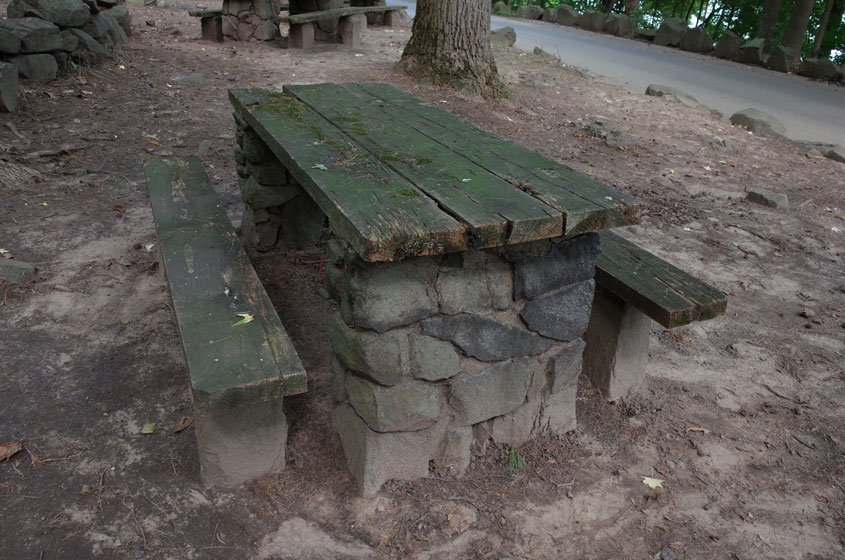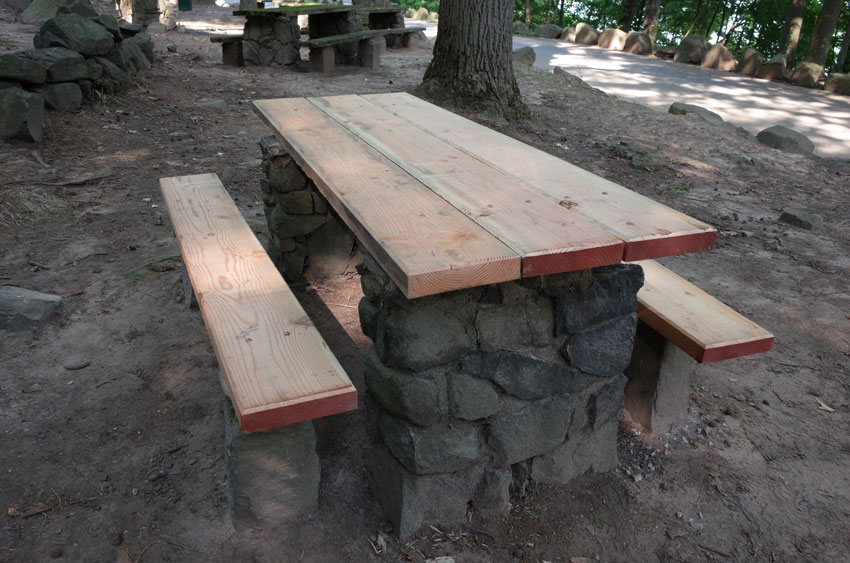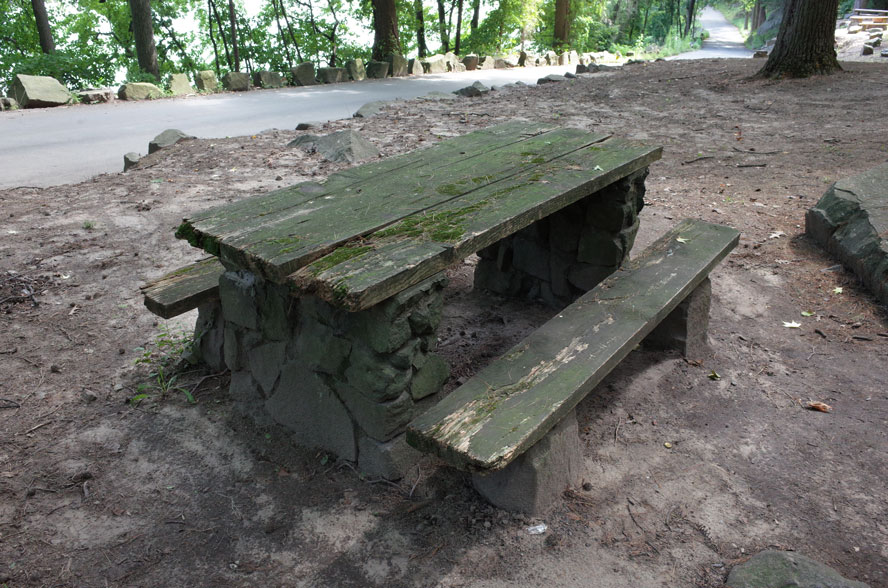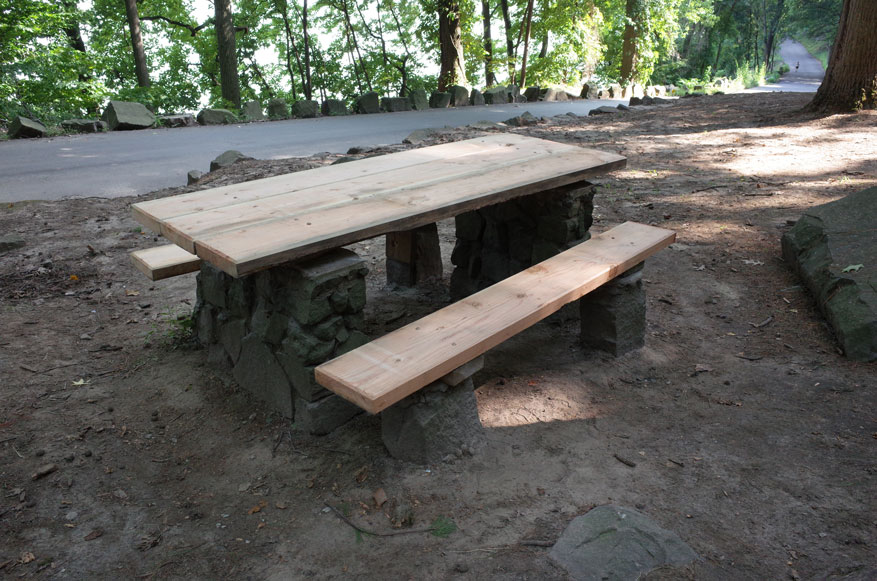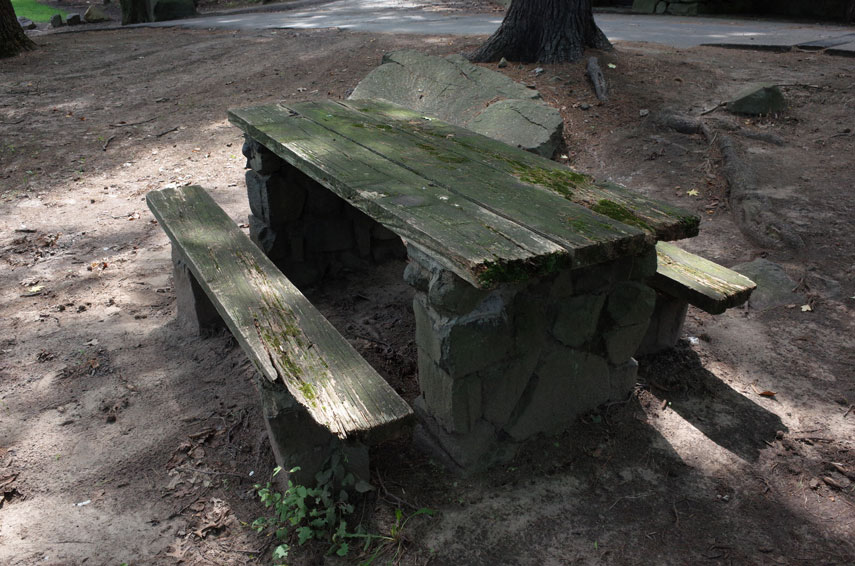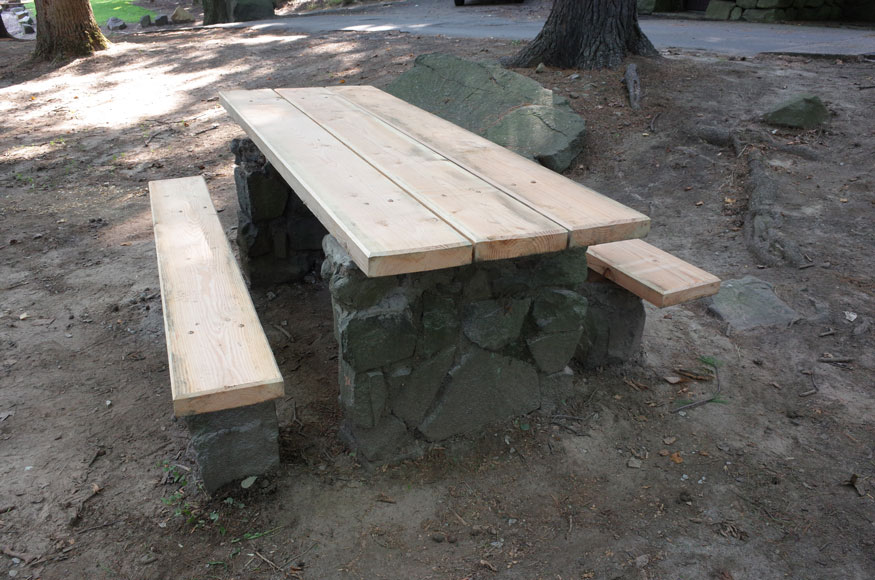On Some New Tabletops
A “Cliff Notes” Story
October 2018
Many of us have found over the years that one of the great pleasures of working in this park is to connect with a legacy that stretches back over a century — across generations to beyond living memory.
Lisa Grosso started as a seasonal employee in our Operations Department three years ago, rising to a supervisory position under department head Anthony Taranto. Operations is the department that manages our bustling picnic areas on summer weekends — while during the week they perform much of the routine maintenance that keeps these areas safe and clean. This fall Lisa became a full-time member in that department. Here she shares her experiences helping to restore some of the stone picnic tables that were first built by members of the Civilian Conservation Corps over eight decades ago…
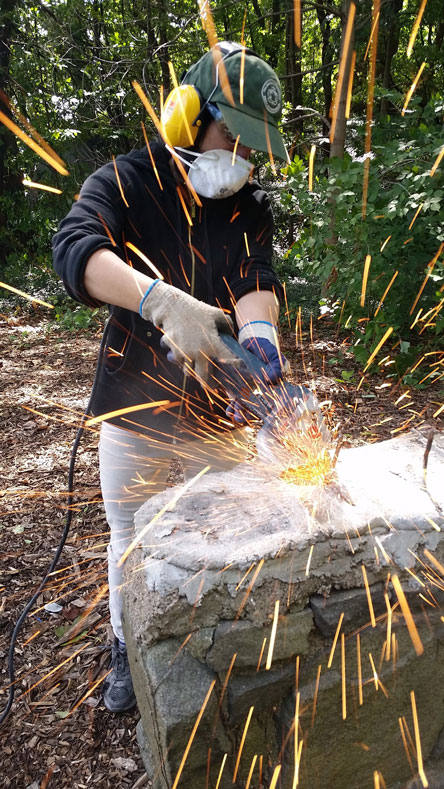
Undercliff Picnic Area is a visitor favorite for a number of reasons: situated in a wooded area, it provides the most shade of any of the park’s four picnic areas; stone benches and grilling structures give it a rustic feel; and the area is free and open to all year-round. It tends to be a quiet retreat away from the more heavily visited areas, which are frequently bustling with large families and the sounds of children enjoying the playgrounds.
I joined the table refurbishing project in the fall of 2016 under Tony’s guidance. The ten tables in the Englewood area — some with an ADA extension to accommodate park visitors with disabilities — had been completed the year prior, and we began working at the south end of Undercliff by the cemetery.
Taking on the task of renovating the picnic tables first sparked Tony’s interest when he noticed how the weathered wood posed a risk to picnicking park visitors: as it started to crumble, it exposed the nails beneath. It was time for a face lift. The last time the tables had been renovated was ten to fifteen years ago, by a member of the Maintenance staff. During that renovation, replacement table tops and benches had been nailed directly into the cement — making removal and reinstallation now a lot more complicated. With other departments busy with their own projects, it was the perfect opportunity to both improve the aesthetics and functionality of a popular park amenity and simultaneously learn a new skill.

Being one of the first big undertakings since my employment at the park began, I got some hands-on experience using a grinder to cut off the exposed nails and studs, as well as with some demolition tools, and eventually a router, to give the new planks a smooth, beveled edge.
First, the boards are cut to size by the park’s carpenters in the trades department. The rotted, mossy table and bench tops, though whimsical in their own way, must be removed and disposed of. That leaves old, rusty nails exposed, which are then removed by use of the grinder. We then have a blank slate on which to proceed.
Recently, the Operations department acquired the use of three bays in the Alpine garage. We use this space for storage and a place in which to work on projects such as this one. It is conveniently located next to the carpentry garage, so the freshly-cut planks are brought in and stacked up, ready to be routered.
Next, we drill through the cement and stone to affix wooden blocks, which in turn serve as the fastening points for the actual table- and benchtops. With this additional step, which is closer to the original design, the planks are able to be screwed into these nailer blocks, rather than directly into the cement, as was done in the most recent renovation. This will permit future generations of park employees to only have to back out a few screws to replace damaged planks, without having to deal with stone or cement. Replacement of a plank is instead as easy as unscrewing and re-screwing the new plank on. Threaded shafts are adhered into the holes with the help of a self-mixing adhesive and, once dry, the blocks are installed—leaving the final step: screwing the planks on.
The project is ongoing and serves as a default position during the pre- and post-season. Once the materials are on site, the process from start to screwing in the final planks takes approximately three to four hours. In total, the materials used have so far included 165 boards used for table tops, 110 boards used for bench tops, 1,100 lag screws, and 440 stainless-steel threaded rods. We have so far completed the restoration of nineteen of the forty tables at Undercliff Picnic Area.
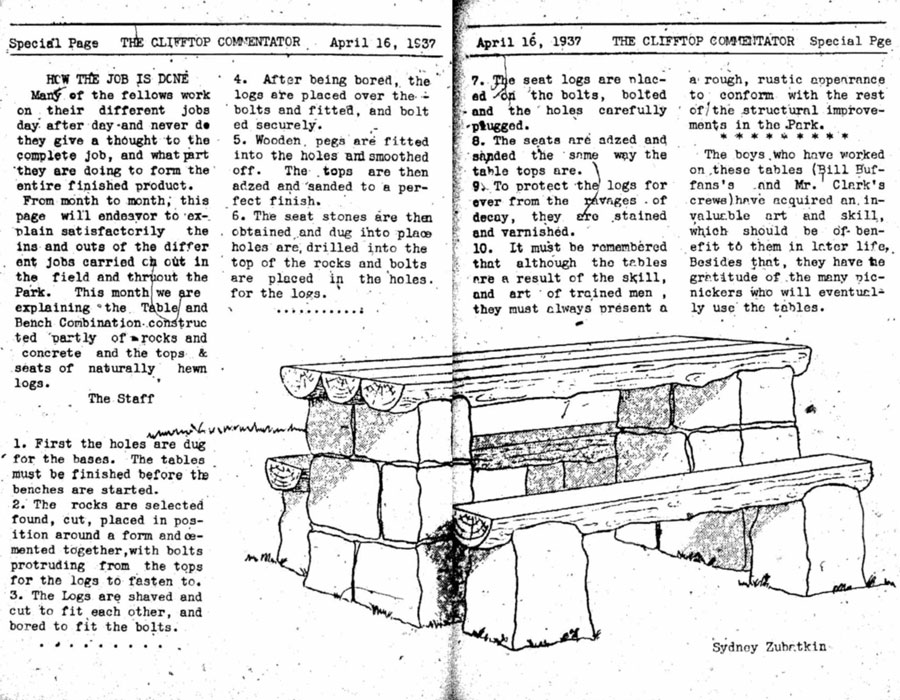
“How The Job Is Done,” a special two-page feature from the April 16, 1937 issue of The Clifftop Commentator, the Camp-produced “newspaper” of Company 1042 of the Civilian Conservation Corps.
The CCC first came to the Palisades in December 1933, and the agency eventually established two camps in what is now Greenbrook Sanctuary. Over the next decade, hundreds of young men cycled through these camps, to work on projects that included building hundreds of cubic yards of stone retaining walls; building and grading trails; planting and protecting thousands of trees; killing tent caterpillars and attempting to “eradicate” poison ivy from the park; and constructing over a hundred “table-and-bench combinations of permanent masonry and log construction” at our riverfront picnic areas: forty-five of them in 1936, thirty-five in 1937, and another fifty-nine in 1938. Some have been lost to the elements over the decades, but many more still stand.
Slideshow photos: Anthony Taranto.
– Lisa Grosso –


